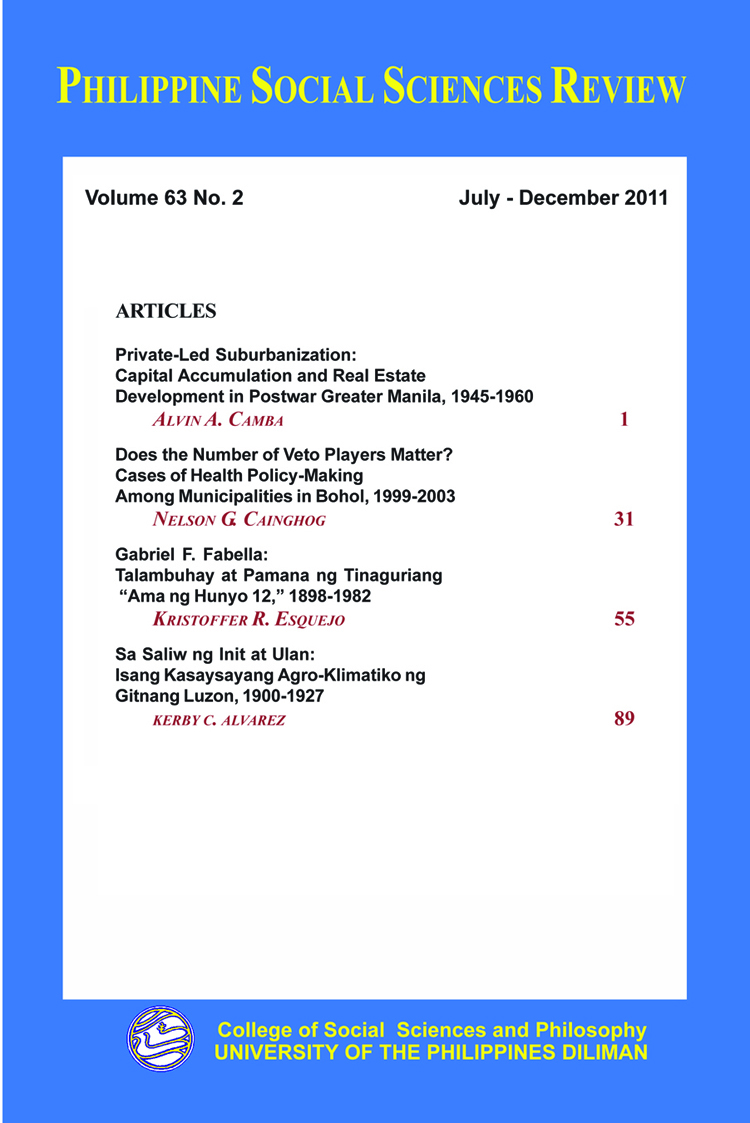Private-Led Suburbanization: Capital Accumulation and Real Estate Development in Postwar Greater Manila, 1945-1960
Abstract
The article argues that in postwar Greater Manila, specifically from 1945 to 1960, conditions such as an open economy due to the postwar reconstruction process and the role of the government as an enabler of private interest culminated in a suburbanization process to the areas of greater Manila led by the private sector via the construction of subdivisions. Elites, who owned many of the real estate companies, took the opportunity to expand, to accumulate more land and capital. As part of a historical trend during the American period, land, then, became a privatized and highly contested commodity that effectively cemented class power in Greater Manila. Such actions resulted in the lack of public planning to answer the needs of many inhabitants of Greater Manila that are very visible until today. First, the article briefly discusses the concept of suburbanization, particularly its nuanced application in Southeast Asian cities and its relationship with established works. Second, the article discusses two related processes: the need of the reconstruction process for foreign investments to come in and the emerging economic nationalism during the period. The third section demonstrates the role of the state in urban planning and real estate in three levels—planning, land expropriation, and financial instruments. The final section elaborates on the impact of state policies, particularly suburbanization of the elites from 1950 to 1960.
Published
2012-10-11
Section
Articles
Keywords
Suburbanization, Real Estate


